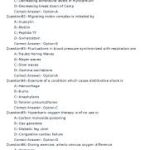In a time where digital opinions influence almost every decision, platforms that manage feedback carry enormous responsibility. RaterPoint enters this space with a bold vision. It aims to bring trust, structure, and clarity to the fragmented world of online reviews. Unlike traditional rating sites, RaterPoint seeks to redefine how users express their experiences and how businesses respond.
Its goal isn’t just aggregation but evolution. RaterPoint introduces a clean interface, user-focused tools, and real-time analysis to turn scattered feedback into useful insights. The platform appeals to individuals, brands, and professionals who want accuracy in opinion-sharing and value in data.
The Idea Behind RaterPoint
RaterPoint was born from a simple question: what if reviews could be smarter? The creators noticed that most platforms either allowed false reviews or failed to capture true sentiment. RaterPoint was designed to change that by adding layers of context, credibility scoring, and intelligent sorting.
Instead of just collecting stars and comments, RaterPoint asks deeper questions. It lets users rate based on specific qualities, like service speed, product durability, or design satisfaction. These multi-dimensional ratings provide more useful, honest, and actionable feedback.
How RaterPoint Works for Users
Anyone can sign up and start rating experiences on RaterPoint. Whether reviewing a restaurant, app, tutor, or freelancer, the system guides users through structured input. The goal is consistency across reviews without losing personalization.
Each review includes optional metadata like time, location, and photos. These add layers of trust and reduce fake reviews. The platform uses machine learning to detect suspicious patterns and flag unreliable content before it spreads.
Smart Ratings Over Star Ratings
Traditional star systems lack depth. One person’s 5-star review may mean something totally different to another user. RaterPoint changes this by offering layered ratings. It breaks each review into multiple subcategories, allowing for nuanced evaluation.
This approach benefits everyone. Readers get a clearer picture. Reviewers feel heard. Businesses receive more specific guidance. In this way, RaterPoint makes feedback more useful and less vague.
An Interface That Promotes Honesty
The visual design of RaterPoint encourages clarity and sincerity. Soft tones, readable fonts, and well-placed tools make rating a comfortable experience. There’s no rush to review. Instead, the platform supports thoughtful input.
The dashboard highlights recent reviews, trending ratings, and community insights. Users can also follow reviewers they trust. This builds a network of credible voices and avoids the chaos of random opinions.
Transparency for Businesses and Creators
For businesses, RaterPoint offers an interactive profile where they can respond to reviews and post updates. They can upload media, highlight changes, and request feedback from verified customers. This opens a conversation instead of a one-sided judgment.
The transparency builds credibility. Potential customers see how businesses handle feedback. A calm, respectful reply to criticism often boosts trust more than a perfect rating ever could.
Tracking Review History and Patterns
Every user has a review history that stays connected to their profile. This encourages responsibility and builds identity within the platform. Patterns of helpful reviews can increase a user’s trust score.
On the business side, analytics help managers spot trends. If service issues cluster around a certain day or staff, action can be taken. RaterPoint turns emotional reviews into operational insights.
Review Ethics and Moderation
False reviews harm both consumers and companies. RaterPoint uses AI and community flags to moderate content. Suspicious reviews are hidden pending manual checks. Repeated abuse leads to account restrictions.
The platform also offers verified purchases and client-tagging. These tools help prove that the reviewer had real interaction with the product or service. This extra layer protects the truth in the feedback loop.
Why Credibility Matters in the Digital Age
With so much information online, credibility has become currency. Fake reviews erode trust and damage honest businesses. RaterPoint is structured to fight misinformation. It rewards users who share accurate, constructive, and respectful reviews.
This is not just about better data—it’s about building digital integrity. Platforms that promote truth will shape the future of e-commerce, education, and services.
Integration with Websites and Apps
RaterPoint allows businesses to embed live reviews on their websites. This boosts transparency and SEO performance. Widgets are customizable and responsive across devices.
Mobile app developers can use the RaterPoint API to link reviews directly from within their platforms. This reduces friction for users and increases review rates.
Real-Time Feedback for Rapid Improvement
Businesses often suffer from slow feedback loops. By the time they discover a problem, damage is already done. RaterPoint delivers instant alerts when a new review is posted. Managers can address concerns quickly.
The dashboard also compares current feedback with historical data. This helps brands spot improvement or decline in specific areas like customer service or delivery time.
Community Features and Social Dynamics
Users can comment on reviews, share them, or endorse helpful opinions. This creates dialogue and builds trust in specific reviewers. Communities form around niche topics like travel, local food, or tech gadgets.
This social layer encourages participation. When users know their input sparks conversation, they return more often. It turns reviewing into a shared activity, not a chore.
Support for Freelancers and Service Providers
Independent workers can showcase their RaterPoint profiles to gain client trust. Instead of scattered testimonials, they get a unified place for reviews. Potential clients can view specific ratings for communication, punctuality, and quality.
Freelancers also gain a performance graph showing consistency over time. This helps them grow professionally and attract better projects.
Privacy and Data Protection
RaterPoint collects only the data it needs. No private details are exposed in reviews. All personal information is encrypted. Users can choose to review anonymously or under their real name.
The platform does not sell data to third parties. It focuses on ethics, transparency, and user control. These values guide every feature and decision.
Frequently Asked Questions
Is RaterPoint free to use?
Yes, users can sign up and review for free. Business tools are offered through premium plans.
Can I delete my reviews?
Yes, users can edit or remove reviews anytime through their dashboard.
Are reviews moderated?
Yes, both AI and human moderators check for abusive or fake content.
Do I need to verify purchases?
Not always, but verified reviews gain more visibility and trust.
Is the platform available worldwide?
Yes, anyone can access RaterPoint, though features may vary by region.
Can I report unfair reviews?
Yes, there is a flag system for businesses and users to report issues.
Conclusion
RaterPoint is more than just another review platform. It is a digital space where voices gain value, opinions are organized, and feedback shapes growth. By focusing on depth, ethics, and transparency, it offers a smarter way to evaluate products, services, and experiences.
In an era ruled by information, RaterPoint helps users cut through noise and find clarity. For businesses, it opens doors to real connection and improvement. For individuals, it provides a voice that matters. Whether you are rating your favorite café or managing your brand’s reputation, RaterPoint stands as your honest, intelligent companion in the feedback journey.










